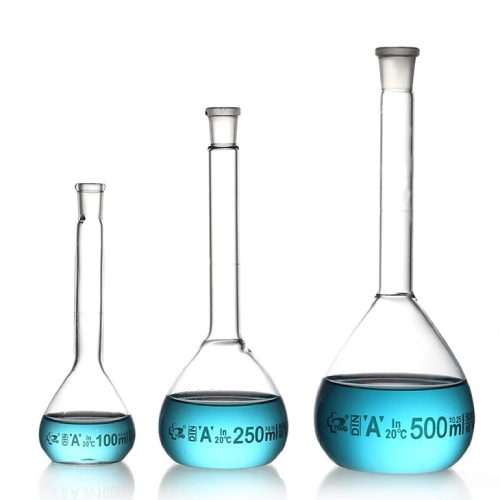-
Description
-
Specification
A Volumetric Flask is a pear-shaped lab apparatus with a round flat bottom commonly used for dilutions and preparing standard solutions. In 1892, the world’s first volumetric flask was invented by Dewar after his name, “Dewar Flask.”
The volumetric flask, also known as measuring flask or graduated flask, is lightweight, compact, and chemical resistant. The flask has ring graduation marking on its extended neck, which stipulates the liquid volume when filled up to the meniscus. The ridge of the flask has a PE Stopper to prevent spillage and maintain a required temperature for the chemicals.
Need of a Volumetric Flask
- Difficult to measure accurate volumes of liquid materials.
- Faults in mass measurements.
- Not feasible in preparing high precision drugs and medicines.
volumetric flasks have the highest level of accuracy with tighter tolerance limits. They have a unique serial number for traceability. The graduation mark on the flask is accurately placed on the flask.
volumetric flasks are used for general purpose and calibrated to a lower level of accuracy. The flasks under Class B have white print on them. Class B flasks lack calibration. These volumetric flasks are generally used in schools.
Standards under which the volumetric flask is manufactured
The volumetric flask is manufactured under three standards, namely:
- ASTM (American Society for Testing and Materials)
- ISO (International Organization for Standardization)
- USP (United Standard Pharmacopeia).
The volumetric flasks come in different sizes likewise:
- 2 ml, 5 ml, 10 ml, 20 ml, 25 ml, 40 ml, 50 ml
- 100 ml, 150 ml, 250 ml, 500 ml
- 1000 ml, 2000 ml and 5000 ml
